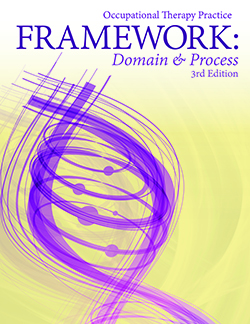I wanted to share the continued journey so far from graduating my Occupational Therapy program to working full-time.
I have been working at my current job in outpatient geriatrics for almost 1 year, but July will make exactly 1 year working full-time. I really love my job and current position and I will explain why:
1. I get to make my own treatments and am really able to tailor them to my clients’ needs. (One day, I may help a client make their bed and put away their laundry; another day, I may be at a clients house baking cookies from scratch!)
2. I really love to continue using my therapeutic self to relate to patients and its so beautiful to see wonderful friendships unfold with clients and most importantly help them maintain their mental well being while simultaneously working on physical tasks and independence.
3. I have a lot of ambition within my current position. I am a solo OT and new grad which can be a dangerous combination but I do try my best to educate myself and seek out consult as needed. I have gotten the privilege of having 2 student observers who remind me of the steps I went through to get into Occupational Therapy school and the hard work required.
4. I am grateful for the opportunities work and my company have granted me. I recently achieved one of my dreams of vacationing to Tokyo, Japan and upon returning, have garnered more ambition to continue my journey to help others and lead a fulfilling life myself.
Some of the cons related to working in my particular setting and outpatient include:
1. The lack of complex diagnoses. Most clients I see are commonly referred for age related debility which is a fancy couple of words for “old age” meaning, I’m typically treating individuals who need therapeutic exercise as well as safety training for independence with community mobility outdoors. This leaves little room for performing occupation based treatment especially when clients are already anticipating going for “exercise” only.
2. I continue to question our scope of practice; There is very little you learn about in school relating in specifics to an occupational therapists scope of practice. That being said, it’s very easy to get caught up in doing monotonous routine exercises and gait training which is all too similar to a physical therapist. In all honesty there’s really no restriction on the things an occupational therapist can do. The real restriction comes into place when occupational therapist are trying to differentiate themselves from a physical therapist based on their treatment modalities. having said that, it’s important that we don’t lose our identity as a profession therefore I always try to explain to my clients why we do the things we do during our sessions and if they are not directly completing an activity (usually because of space confines), I try to relate it back to an occupation they might do in their home (for instance when I have a patient completing rowing exercises with their arm, I tell the patient pretend you’re pulling open your front door or a refrigerator door because this is the same movement that’s required to do those things) Believe it or not, the way you frame an activity can do a lot to change a persons motivation to perform it; Perceiving is believing, after all.
3. The beginning of a session is still sometimes the hardest barrier to overcome. I am always wondering if i did enough to evaluate a patient, if there’s anything I could’ve done better? Or if I took enough quantitative measurements to justify treatments (I’m not much for goniometrics). I also question the validity of functional tests in many cases because I don’t feel like my clients and their needs typically fit the box that functional tests make them out to need to achieve. For example, the Lower Extremity Functional Scale asks a geriatric client if they could run as well as hop. 2 questions I wouldn’t dare expect my geriatric clients to do just out of sheer concern for their high incidence of falls and risk of injury.
4. Doctors in my area don’t understand an Occupational Therapists scope of practice in an outpatient setting which limits the amount of OT prescriptions and referrals we get. I feel that there is an continual uphill battle to get physicians to understand what an OT does and why a client may benefit from OT. We are basically the “Every man”, the “golden boy” of health professions because our practice is so vast it hones the skills of speech, physical, and activity therapists as well as psychologists and behavioral therapists and allows us to do so much that medical professionals can’t quite conceptualize what exactly we do at all. For this reason among others, I try my best to educate my fellow physical therapist and office staff of just how to educate medical staff, coordinators, and physicians as well as request referrals appropriately.
With all of these things at the forefront of my mind, I continue to count my blessings and be happy to be in a position where I can continue to grow and learn under a supportive boss and community. Compared to other therapy places, I feel that I have wonderful work-life balance, a great inter-professional team, and a fabulous client base.
I will try to continue these posts more regularly and welcome any feedback or comments readers may have.


